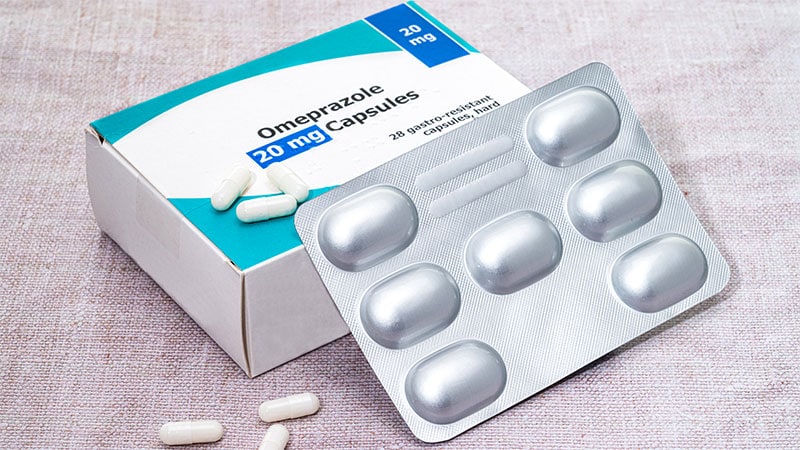[ad_1]
Prevention of gastrointestinal (GI) lesions and hemorrhage in patients receiving antithrombotics relies on gastroprotection with proton pump inhibitors (PPIs) in high-risk individuals. During the recent European Days of the French Society of Cardiology 2025 held in Paris, France, Gilles Macaigne, MD, from the Intercommunal Hospital Group Le Raincy Montfermeil, France, reviewed updated strategies for prescribing PPIs, emphasizing risk stratification, side effects, drug interactions, and Helicobacter pylori screening.
Underprescription Issues
While 50%-80% of PPI prescriptions are unjustified, particularly for unnecessary nonsteroidal anti-inflammatory drug (NSAID)-related ulcer prophylaxis, PPIs remain underprescribed for patients at risk for bleeding on antithrombotics, particularly direct oral anticoagulants (DOACs).
A Danish study based on a national health data register found that only 40% of the patients treated with dual antiplatelet therapy of GI bleeding did not receive PPIs.
PPIs have been demonstrated to be effective in this regard. A meta-analysis showed that PPIs used as gastroprotective treatments are associated with an 80% reduction in the risk for bleeding.
“It is now well established that there is a benefit of PPIs in the prophylaxis of digestive lesions and bleeding in these at-risk patients,” Macaigne said.
No specific recommendations are available for the prevention of bleeding in patients receiving antithrombotic drugs. However, the European guidelines for chronic coronary syndrome recommend PPIs (Class I, Level A) for high-risk patients receiving aspirin, dual antiplatelet therapy, or DOACs.
To gain a clearer picture of risk factors in patients receiving antithrombotics to prevent cardiovascular risk, Macaigne proposed an algorithm based on the European consensus.
In patients receiving antiplatelet drugs such as aspirin, PPI treatment is recommended in the following cases:
- History of gastric or duodenal ulcers, with or without complications
- Concomitant use with antiplatelet agents
- Concomitant use of anticoagulants or oral anticoagulants
- Concomitant use with an NSAID
- Concomitant use of corticosteroids
PPIs are also recommended in the presence of at least two of the following risk factors: Age ≥ 65 years, dyspepsia, gastroesophageal reflux disease, chronic alcoholism, and H pylori infection.
For patients receiving a DOAC, the same risk factors apply, but “age becomes a major risk factor,” justifying PPI prophylaxis.
“Patients over 65 years of age on DOACs must receive prophylactic PPI treatment,” as do patients treated with a combination of antithrombotics, Macaigne noted.
Drug Interactions
Among DOACs, rivaroxaban is associated with the highest risk for GI bleeding, with a fivefold increased risk in placebo-controlled studies, while apixaban has a lower risk than other DOACs (threefold increased risk).
Half-dose PPIs (except omeprazole) should be administered 30 minutes before breakfast for optimal acid suppression.
“A single dose of PPI allows a reduction in gastric acidity of approximately 60% for almost 24 hours,” Macaigne noted.
PPIs metabolized via CYP450 (eg, omeprazole) may reduce the efficacy of clopidogrel.
Since clopidogrel requires CYP450 metabolism to release its active metabolite, Macaigne recommended maintaining a 12-hour gap between clopidogrel (evening dose) and PPIs (morning dose) or switching to rabeprazole, which has a lower interaction risk.
Among PPIs, rabeprazole is preferred in case of treatment with clopidogrel, the risk for interaction being lower with this drug. If possible, clopidogrel can also be substituted by prasugrel, which has no interaction with PPIs.
H pylori Infection
Although H pylori infection does not increase the risk for digestive bleeding with anticoagulant therapy, eradication improves chronic gastritis and reduces the risk for gastric cancer in patients on PPIs. The 2022 Maastricht VI/Florence Consensus Report recommends screening for H pylori infection in these patients.
For symptomatic patients, diagnosis is based on endoscopy and biopsy, whereas asymptomatic patients require a breath test. “The PPI must then be stopped 2 weeks before the test to increase its sensitivity and not take antibiotics during the previous 4 weeks,” Macaigne advised.
Discontinuation
Tapering PPIs gradually helps avoid symptom flareups. “A sudden interruption of PPIs is accompanied by acid secretion at a rate higher than before the start of treatment,” which induces digestive symptoms, Macaigne explained.
Another side effect of PPIs is hypomagnesemia, as PPIs inhibit magnesium absorption, especially in patients aged more than 65 years. A serum magnesium test should be performed in these patients and supplementation should be prescribed if necessary.
PPIs may also promote digestive infections by acid-sensitive bacteria, such as Clostridium difficile, Salmonella, and Campylobacter, and bacterial proliferation in the upper part of the digestive tract.
Microscopic colitis-related secretory diarrhea may also occur. “It usually occurs in patients who have started PPI treatment for about 4 months.” Lansoprazole should be considered a potential trigger if secretory diarrhea appears after this treatment period.
This story was translated from Medscape’s French edition using several editorial tools, including AI, as part of the process. Human editors reviewed this content before publication.
[ad_2]
Source link : https://www.medscape.com/viewarticle/better-outcomes-antithrombotics-heres-how-ppis-help-2025a10003il?src=rss
Author :
Publish date : 2025-02-11 11:31:25
Copyright for syndicated content belongs to the linked Source.
